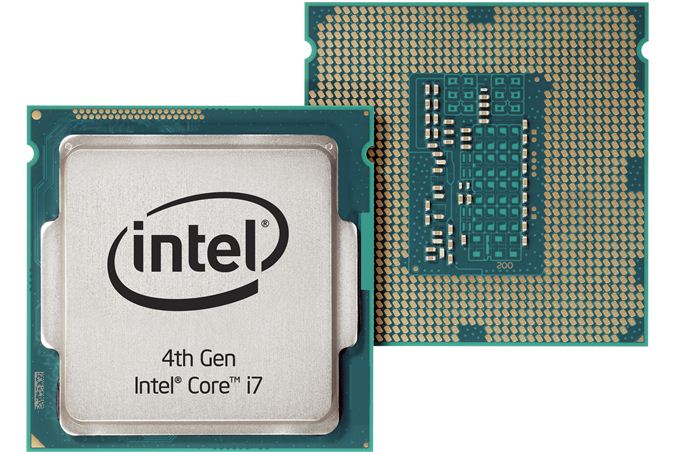Intel's Haswell - An HTPC Perspective: Media Playback, 4K and QuickSync Evaluated
by Ganesh T S on June 2, 2013 8:15 PM EST
Over the last two years, the launch of every major desktop CPU family from both AMD and Intel has been accompanied by a dedicated HTPC-oriented article. This coverage has been complementary to Anand's extensive analysis from a general computing perspective. Haswell will be no different. The advancements made from Llano to Trinity and from Sandy Bridge to Ivy Bridge had rendered entry level platforms good enough for casual / mainstream HTPC users. Advanced users still require discrete GPUs for using some video renderers and obtaining accurate display refresh rates. Each vendor has their own quirks when it comes to driver features and stability. This has made it difficult to declare any one solution as the perfect HTPC platform. Intel has hyped up improved GPU performance in the lead up to Haswell.
Has Intel improved the GPU performance and video-centric features enough to make discrete GPUs redundant for HTPCs? More importantly, how much of an improvement do we have over the HD4000 in Ivy Bridge? This question will be looked at from multiple angles in the course of this review. We will determine whether the shortcomings of Ivy Bridge (rendering benchmarks and refresh rate support, primarily) have been addressed. Also of importance are the HTPC configuration options, stability and power efficiency.
In this review, we present our experience with low-power desktop Haswell as a HTPC platform. We have listened to feedback from our earlier HTPC reviews at launch time and made efforts to source a low power CPU suitable for HTPC duties. In earlier HTPC reviews put out at launch time, we used the highest end CPU sampled by Intel / AMD. This time around, thanks to ASRock, we managed to get hold of an Intel Core i7-4765T CPU along with their mini-ITX motherboard, the Z87E-ITX.
In the first section, we tabulate our testbed setup and detail the tweaks made in the course of our testing. A description of our software setup and configuration is also provided. Following this, we cover the video post processing options provided by the Intel drivers. A small section devoted to the custom refresh rates is followed by some decoding and rendering benchmarks. No HTPC solution is completely tested without looking at the network streaming capabilities with respect to some of the popular OTT (over-the-top) services. 4K is the next major upgrade stop for the casual HTPC user. Haswell does have 4K display support and we will have a dedicated section to see how well it works. We are finally at a point where GPU encoders have become stable and popular enough for mainstream open source projects to utilize. A section is devoted to Handbrake's integration of QuickSync capabilities. In the final section, we cover miscellaneous aspects such as power consumption and then proceed to the final verdict.










95 Comments
View All Comments
ganeshts - Monday, June 3, 2013 - link
Haven't come across a 4Kp60 sample yet. All the stuff on YouTube is at a max. of 30 fps, and I have some samples sourced from other platforms that are QuadFHD at 30 fps. Please pass on any 4Kp60 clips that you have.I know there are two crazy scene encodes with 4Kp50 (Crowd Run 2160p) and a 250 Mbps one (Ducks Take Off). No hardware decoder I have seen has been able to handle either properly. So, I doubt 4Kp60 is going to work :| That said, if I get a chance, I will definitely evaluate the Iris / Iris Pro.
madwolfa - Monday, June 3, 2013 - link
Why do you still need 23.96 support since "Smooth Motion" feature in MadVR? I couldn't care less now...Dug - Monday, June 3, 2013 - link
Because not everyone can, wants to, or even knows what MadVR is. Never mind setting it up properly.HOSH - Monday, June 3, 2013 - link
Personally this is going in the right direction, but I am wondering what low power settings we could use with the Core i7-4750HQ or the Core i7-4770R in an Mini-ITX HTPC style board since they both have the Iris Pro 5200. From reading the reviews here the Iris Pro 5200 should be closer to what NVIDIA or AMD currently has to offer in the HTPC discrete graphics, but on die for a cleaner system.Aikouka - Monday, June 3, 2013 - link
Is it worthwhile to assume that the poor QuickSync performance is just a software problem? I've been interested in gaining QuickSync support, but the performance presented isn't that enticing.ganeshts - Monday, June 3, 2013 - link
Very much possible. I am going to evaluate a driver downgrade to see if the issue is in the latest drivers.superjim - Monday, June 3, 2013 - link
Why do we need an i7 for HTPC duty? A 45W Core 2 Duo or Athlon II system is plenty using a 6570/430 and up GPU. Sure it uses more power but that's hardly a problem (both in money and heat). What is the usage scenario for an HTPC that needs an i7?Aikouka - Monday, June 3, 2013 - link
They probably didn't have access to a lower-end Haswell processor... especially since Intel hasn't released the i3 Haswell processors yet.superjim - Monday, June 3, 2013 - link
Makes sense but even an i3 is overkill for an HTPC as another commenter suggested. I think Trinity has a pretty tight grip on the bang-for-the-buck HTPC right now. Richland will only make that better.Penti - Monday, June 3, 2013 - link
It really depends on the amount of post processing done on the HEPC, a Trinity/Richland or Intel with integrated graphics or something like a HD6450 really isn't enough for all. Obviously a fast CPU is good as a fallback when there is no hardware acceleration too.